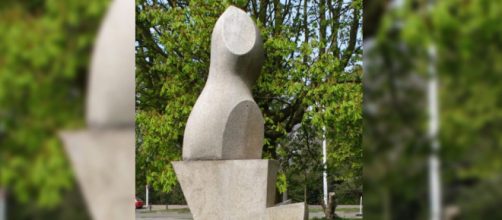Don’t believe everything the art world says about Hans Arp. An early 20th-century abstract artist, his work invites comparison with the Surrealists. But he didn’t conform to isms.
Consider Arp's last work, “Scrutant l’horizon” (Scanning the Skyline) now highlighted in an exhibit of the artist's work at Kunstmuseum Den Haag in the Netherlands.
According to Hauser & Wirth Museum, one of the treasure houses that shows Arp’s work, he used a “nonsensical vocabulary.”
How can Hauser & Wirth say on its website that Arp’s work is without meaning while acknowledging his fascination with the physiological process – procreation and growth?
Nothing about these things is senseless.
Words matter
Former New York Times art critic John Canaday also had Arp wrong in his 1959 book “Mainstreams of Modern Art.”
Arp’s abstractions, Canaday wrote, have “no intentional meaning, dictated by the demands of the Subconscious.”
Yet, at the same time, Canaday noted that Arp sought to “capture life.” How can you say an artwork is meaningless if you know the artist’s interest in nature? By his sculpture titles alone, you find “intentional meaning.”
Canaday even said it himself: "Arp's work is non-representational, yet firmly rooted in nature." That very focus can easily be seen in the artist’s last work, “Scrutant l’horizon.” Free form, yes, but natural form, too.
I’m thinking of Arp’s painted sculpture “Birds in an Aquarium,” which is way more than an abstraction. While not a reproduction of a life form, the rounded shapes imply it.
Arp’s “Earth Forms” also suggests a life form. What you looks like a boulder with a transparent interior complete with a heart and a venous system.
Getting artists right
Some art experts have gotten Arp right. Historian Richard Huelsenbeck witnessed the artist’s love of life – “his playfulness, a certain childlike joy” in his 1991 book “Memoirs of a Dada Drummer.”
Huelsenbeck recalled an incident when Arp was a guest at a hotel in St. Moritz and told him about something that impressed him.
Arp said he saw American women dancing without shoes.
“Think of this,” he said, “they get rid of their shoes and dance.” When Huelsenbeck asked him why he thought the women did that, he said, “It’s very simple, because they dancer better without.”
Likely, Arp was not only talking about dancing, but also about artmaking. By throwing off the shackles of representational art, he could make better art.
And unlike other abstract artists, Arp was not acting out some inner turmoil. He was fun to be with, Huelsenbeck said. After staying with him for a week, he reported, “We had so much fun together and were so gay that it really was a delightful week.”
Even if you aren’t sure of what you’re seeing in Arp’s work, you can’t mistake his lightheartedness. Huelsenbeck saw this reflected even in the artist’s house.
Behind a “normal fence, there were abstract sculptures of eggs, breasts, and thighs.” So, if there’s an Arp legacy, I’d say he made the invisible visible. His amoeboid forms were his way of giving form to forces in nature.


